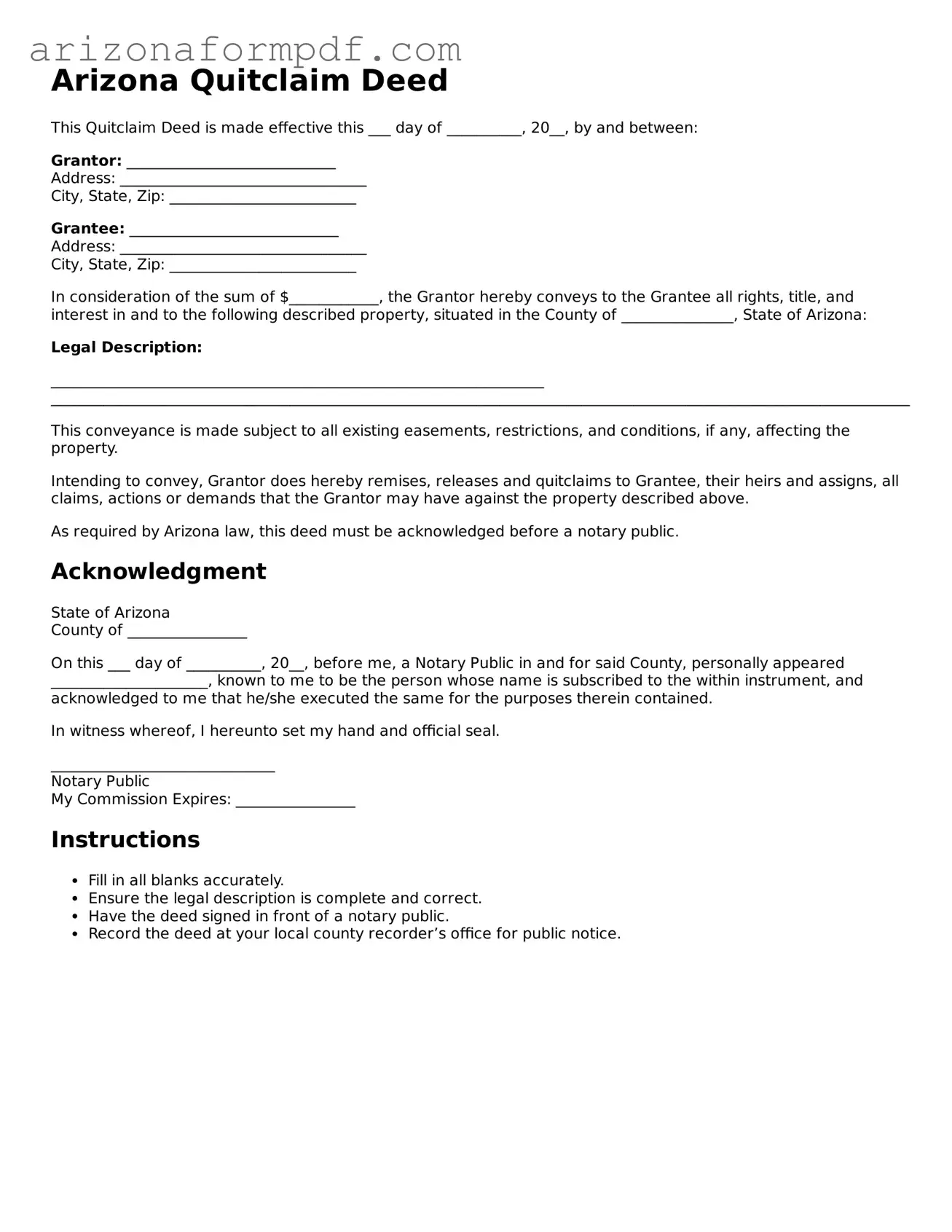Arizona Quitclaim Deed
This Quitclaim Deed is made effective this ___ day of __________, 20__, by and between:
Grantor: ____________________________
Address: _________________________________
City, State, Zip: _________________________
Grantee: ____________________________
Address: _________________________________
City, State, Zip: _________________________
In consideration of the sum of $____________, the Grantor hereby conveys to the Grantee all rights, title, and interest in and to the following described property, situated in the County of _______________, State of Arizona:
Legal Description:
__________________________________________________________________
___________________________________________________________________________________________________________________
This conveyance is made subject to all existing easements, restrictions, and conditions, if any, affecting the property.
Intending to convey, Grantor does hereby remises, releases and quitclaims to Grantee, their heirs and assigns, all claims, actions or demands that the Grantor may have against the property described above.
As required by Arizona law, this deed must be acknowledged before a notary public.
Acknowledgment
State of Arizona
County of ________________
On this ___ day of __________, 20__, before me, a Notary Public in and for said County, personally appeared _____________________, known to me to be the person whose name is subscribed to the within instrument, and acknowledged to me that he/she executed the same for the purposes therein contained.
In witness whereof, I hereunto set my hand and official seal.
______________________________
Notary Public
My Commission Expires: ________________
Instructions
- Fill in all blanks accurately.
- Ensure the legal description is complete and correct.
- Have the deed signed in front of a notary public.
- Record the deed at your local county recorder’s office for public notice.
